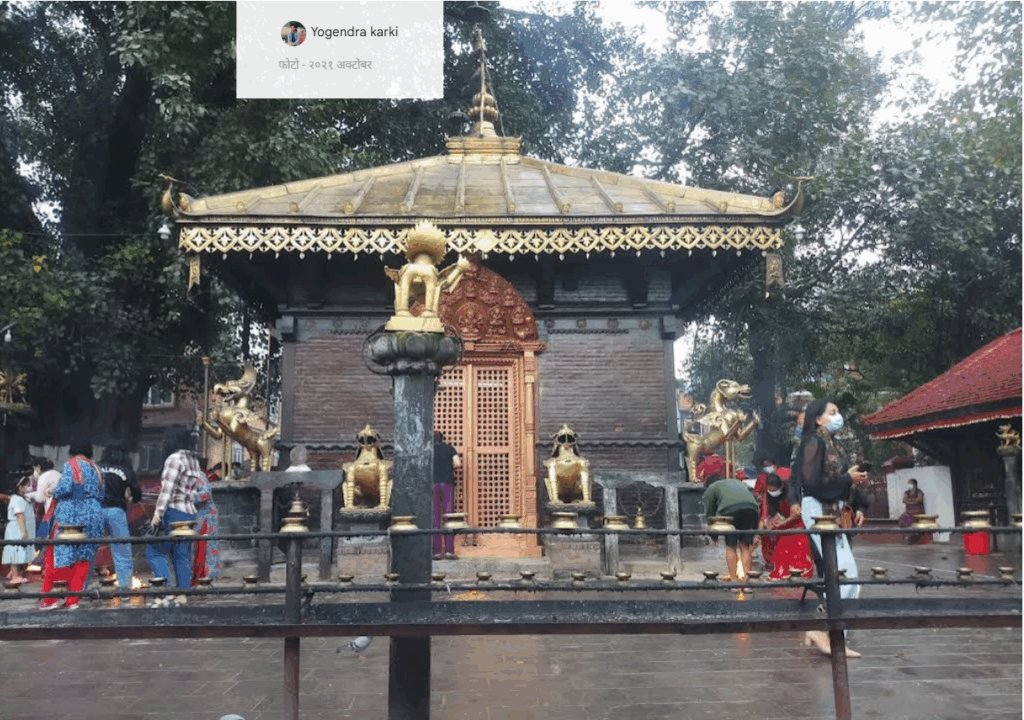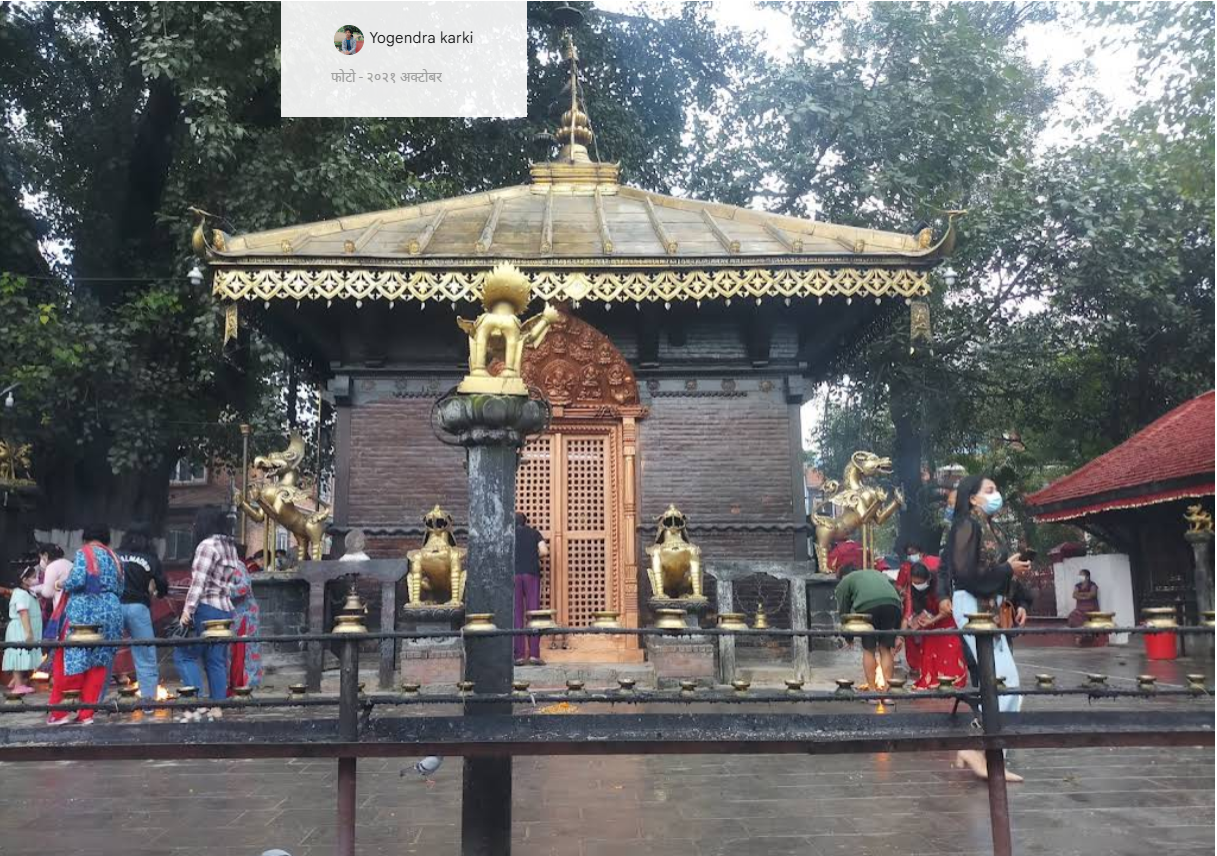
Maitidevi Temple is one of the most important spiritual monuments in the Kathmandu valley and is visited by hundreds of pilgrims and tourists every day. The shrine is an ancient shaktipith is in the middle of the Kathmandu valley, in Dilli Bazaar and Gyaneshwar across the street, and it definitely has both value as a historical site and significance as a religious site. The very name of the temple is telling, “Maiti” translates as parental home, and “Devi” as a goddess and together, they show the temple’s unique position as the divine abode of all goddesses. In Nepal, SEO professionals and content creators aiming to rank Nepalese content in search engines know the importance of both the topic’s cultural intricacies and the fundamentals of search engine optimization.
Historical Background
Inscriptions and idols from the Lichchhavi era (around 400-750 AD) bestow intrigue on the history of the Maitidevi Temple, which is stated to have been first established in 628 AD by Amshu Verma, a warrior during King Shiva Dev’s rule. Amshu Verma is said to have been one of the first warriors who aided King Shiva Dev. However, construction on the current structure was completed in 1711 BS (1654 AD) by Chaturdeshi Seva Khalak, who, along with other masters, used the finest quality of brick, surki-lime, and brick dust. In the 20th century, Chandra Shamsher Jung Bahadur Rana’s contributions to gilding the roof in 1965 BS, along with other ornate features, was a tremendous boon to the other renovations the temple had sustained. It is no wonder to see both devotees and history aficionados marvel over this magnificent wonder is a core part of the region’s continuity in spirituality throughout its temples that have withstood the test of time, along with the placing of delicate dynasties from all over the world.
Architectural Features
The temple depicts pagoda-style architectural design. One such design is single-storey, having an approximate length and breadth of 4.95 meters, and a height of 7.00 meters. On the other hand, the sanctum sanctorum entrance is traditionally flanked by a stone temple lion, and is arches over by cross bracing of a single peepal tree, resulting in a peaceful atmosphere. The temple features a variety of distinctive architectural elements:
- Mayur Kunda: This is a holy pond concerned with the mythology of the temple.
- Brahmanala: This is a consecrated watercourse.
- Several shrines: The shrines consist of Radha Krishna, Saraswati, Ganesh, Hanuman, Shivling, Lord Narayan, and Chinnamasta Devi.
- Cremation ground (Shamshan Ghat): This has been used since ancient time by seven particular Newar caste.
The entire building in a row temple temple is a master piece of architecture. The temple wood carvings and sculptures in particular, the stone peacock vahan (vehicle) sculptured in between the two lion stone sculptures gate guard, is a vivid illustration of masterful workmanship.
Religious Significance
As one of the principal shaktipiths of the Kathmandu Valley, the Maitidevi Temple is of great religious significance. Worshippers consider it their religious duty to offer water to Maitidevi before their worship at the Manakamana Devi Temple situated in Gorkha, eg owing to the belief that it will grant the worshippers’ desires. The temple is also considered the guardian deity of 28 villages situated in the Kathmandu Valley. The worshippers of these villages used to celebrate Lakshmi Puja on the day after Kukur Tihar only after entering the Maitidevi temple on a cot from Maligaon. The temple is particularly venerated for its association with tantric rites, and its participation in mysticism as well. Many devotees claim to have their suffering alleviated after offering worship to the temple with full devotion. Even more, devotees claim that the Goddess illuminates over the day. Devotees have reported that in the morning she is a smiling child, in the day she is a young woman, and at night she is an old woman.
Cultural Practices and Festivals
The temple remains active with pilgrimages and worship all year round and gets especially crowded on Tuesdays, Thursdays, and Saturdays. Dashain brings with it the grandest decorations, with the temple adorned with multicolored lights to make the surroundings especially lovely and pleasant. During the festive month. The Navratri days of Dashain are marked by animal sacrifices, while the Teej festival sees the married women gather at the temple to perform an ensemble of singing and dancing. Special celebrated are also held at the temple during the Dog festival of Tihar and during Chaite Dashain. The ever-present worship rituals are performed by Vajracharya priests of Newar heritage, who have held the temple’s caretaking and guardian duties for countless generations. The priests are paid a monthly salary with worship expenses, averaging NPR 200,000 collected from the temple each month through offerings and donations.
Local Legends and Mythology
The legends of the Maitidevi Temple and its origins are certainly interesting. One of the legends speaks about how, while the five goddesses (Panchakumari) flew through a sky path, a tantric (mystic) saw them grazing the goats and used his powers to convince the goddesses to land and protect the land forever. Another version tells of a farmer who was trying to excavate land near the banks of the Rudramati river (currently known as Dhobi Khola). He was trying to move an immovable large stone, but instead, with no energy. He fell asleep and was awakened by the windy feathers of a peacock who was carrying the five goddesses, and also, who listened to the farmer’s story. The goddesses sworn to protect the position and thus the name Mayurtirtha (mayorpeacock pilgrimage site). The story of the temple becomes a bit incredible with the story of the idloes. The idols in question were of Panchkumari Maitidevi and Bhairav and were stolen and later recovered in 2019. They were in a box that 15 soldiers were unable to lift onto a plane to Delhi and was located at the Kathmandu airport.
Experience as a Visitor
While visiting the Maitidevi Temple, you encounter a deep sense of the spiritual and sacred, a welcome relief from the hectic pace of Nepal’s capital, Kathmandu. One reason, of course, is the unique and transcendental atmosphere generated by the temple itself. The scent wafting from the shrine goes a long way in enhancing this spiritual quality of the temple, providing both devotees and visitors a unique emotional and devotional memory. In summer, people come to the temple in the morning, as part of their exercise routine, to appreciate the cool, as do in winter the sun bathers. The temple grounds offer an oasis amidst the busy city, a place to escape and unwind.
Information for Visitors:
- Address: Maitidevi Rd, Kathmandu, between Dilli Bazaar and Gyaneshwar
- Hours: 4 am-9 pm daily
- Accessible by:
- – Microbus – From Ratna Park to Balaju/Boudhanath, alight at Maitidevi (ticket NPR 15-30)
- – Taxi – NPR 300-700 from any location within Kathmandu Valley
- Recommended: Mornings and evenings for worship; energy is strongest on Tuesdays, Thursdays, and Saturdays, best access at these times.

